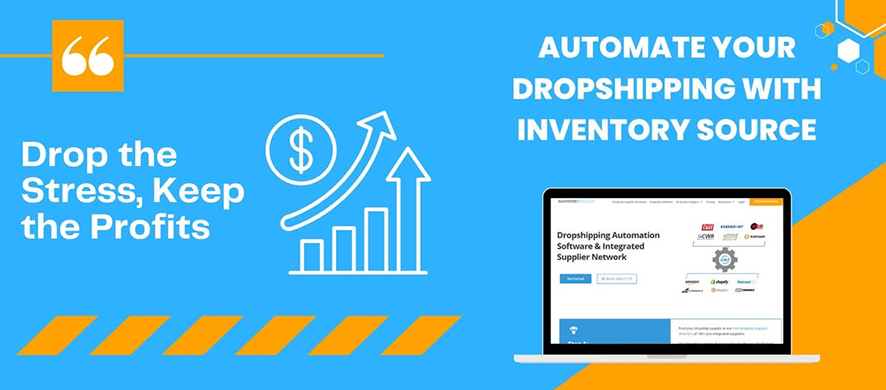
When you’re just starting out in dropshipping, spreadsheets feel like your best friend. They’re flexible, familiar, and free. You can track inventory, update pricing, and manage product listings without investing in fancy software. But as any serious seller knows, that system doesn’t hold up for long. As your store grows, so does the chaos. What once worked fine with 20 products and a single supplier quickly becomes a liability when you’re managing hundreds of SKUs across multiple vendors.
That’s why more advanced dropshippers are making the leap from manual CSV uploads to full-blown supplier integration. They’re ditching the spreadsheets not because they’re lazy—but because their business demands more. And if you’re aiming for long-term growth, scalability, and sanity, the switch isn’t just smart—it’s inevitable.
Contents
- The Spreadsheet Struggle: Why It Stops Working
- The Rise of Real-Time Supplier Integration
- How Integration Solves Real Problems for Growing Stores
- What to Look For in a Supplier Integration Platform
- Making the Switch from Spreadsheets to Supplier Feeds
- Final Thoughts: Spreadsheets Are for Starters—Integrations Are for Scalability
The Spreadsheet Struggle: Why It Stops Working
Spreadsheets can be powerful in the right hands. But as dropshipping operations expand, their limitations become glaring. Here’s where they start breaking down:
1. Delayed Inventory Updates
Spreadsheets are static. Even if you’re importing a fresh CSV file daily from your supplier, it’s already out of date by the time you upload it. If your supplier sells out of a hot item in the afternoon and you’re working with morning data, you’re left dealing with oversells and refunds.
- Time lag: Most supplier feeds only update once or twice a day via CSV.
- Manual uploads: Every update requires downloading, formatting, and re-uploading.
- No real-time reaction: You can’t respond instantly to stock changes or pricing shifts.
2. Human Error
Let’s face it: spreadsheets invite mistakes. One wrong formula, a misplaced row, or a copy-paste mishap can break your listings, mess up your pricing, or even hide products completely from your store.
The more suppliers and SKUs you manage, the higher the risk. And when customers start placing orders based on bad data, it’s your brand that takes the hit—not your spreadsheet.
3. Bottlenecks That Kill Growth
Manually managing supplier updates works—until it doesn’t. Eventually, you’ll hit a point where:
- You’re spending hours each week just updating product data
- You’re afraid to add new products because it means more maintenance
- Your ops can’t keep up with marketing success
That’s when growth stalls. You’re too busy maintaining the system to improve it.
The Rise of Real-Time Supplier Integration
Supplier integration flips the whole model. Instead of pulling static files into your store, your store stays connected to your supplier’s feed in real time. Think of it like syncing your bank account to your budget app—no more guesswork, just live, accurate data flowing automatically.
What Real Integration Looks Like:
- Live inventory syncing: Your product listings update instantly as supplier stock changes.
- Automatic price updates: No need to monitor cost changes—your margin rules handle it.
- Hands-off product onboarding: New items from your supplier can be auto-imported with mapped titles, descriptions, and images.
- Centralized control: Manage dozens of suppliers and thousands of SKUs from one dashboard.
No more downloading files. No more worrying about accuracy. Just clean data and consistent operations.
How Integration Solves Real Problems for Growing Stores
Let’s break down the concrete ways supplier integration improves your business.
1. No More Overselling
Overselling is one of the quickest ways to lose a customer. With real-time integration, your product availability reflects your supplier’s actual stock—automatically. That means no more selling out-of-stock items or issuing last-minute refunds.
2. Dynamic Pricing = Protected Margins
Suppliers change pricing often. If your store doesn’t react fast enough, you could sell a product at a loss without even knowing it. Integration platforms allow you to set pricing rules (like cost + 30%) that adapt automatically as supplier prices fluctuate.
3. Bulk Product Management Without the Headaches
Want to launch 200 new products? With a spreadsheet, that’s an all-day project. With integration, it’s a few clicks. You can browse your supplier’s catalog, apply rules, and sync products into your store with pre-set titles, descriptions, tags, and images.
4. Multi-Supplier Made Easy
Spreadsheets get ugly fast when you’re juggling more than one supplier. Real-time integration lets you:
- Tag products by supplier
- Prioritize order routing rules
- Auto-remove duplicates
- Track fulfillment timelines based on supplier SLAs
The more complex your supplier network, the more essential integration becomes.
What to Look For in a Supplier Integration Platform
Not all integrations are equal. If you’re shopping for a platform, these are the key features serious sellers prioritize:
1. Real-Time Inventory Syncing
Look for platforms that update every 15 minutes to an hour—not just once a day. Inventory Source, for example, offers near real-time syncing with over 230 vetted suppliers.
2. Automated Order Routing
You shouldn’t be manually sending order details to suppliers. Integration platforms should automatically forward orders, track fulfillment status, and sync tracking numbers with your storefront.
3. Flexible Pricing Rules
Your profit margins should never depend on memory. Look for dynamic pricing tools that adjust based on supplier cost, weight, shipping zones, or category.
4. Support for Custom Feeds
If you work with niche suppliers or private label partners, make sure your integration platform can handle CSV/XML/FTP feeds and convert them into usable data.
5. Multi-Platform Integration
Selling on Shopify, Amazon, eBay, or Walmart? Choose a platform that syncs inventory and listings across channels. Avoid tools that only support one storefront.
Making the Switch from Spreadsheets to Supplier Feeds
Moving from spreadsheets to integrated automation might sound like a leap—but it’s more of a pivot. Here’s how to do it with minimal disruption:
Step 1: Audit Your Current Workflow
Identify where you spend the most time managing product data. Pinpoint which suppliers are the most active or error-prone.
Step 2: Choose an Integration Platform
If you’re using U.S.-based suppliers, Inventory Source is a strong contender. It connects with over 230 suppliers and offers full automation—from product syncing to order routing to tracking updates.
Step 3: Start with a Hybrid Approach
You don’t have to go all-in overnight. Many platforms allow you to test integrations while still managing some suppliers manually. Start with one supplier and gradually onboard the rest.
Step 4: Create Rules and Automations
Set your margin rules, category filters, and publishing logic. Build a system that reflects your brand and pricing strategy, so every synced product meets your standards.
Step 5: Monitor, Refine, Expand
Track how integration affects your fulfillment time, customer satisfaction, and error rates. Then refine your workflows and expand to new products or suppliers with confidence.
Final Thoughts: Spreadsheets Are for Starters—Integrations Are for Scalability
There’s no shame in starting with spreadsheets. They’re a great training ground. But if you’re serious about scaling your dropshipping business, there comes a point when they hold you back more than they help.
Supplier integration isn’t a fancy upgrade—it’s a growth necessity. It frees up your time, reduces operational risk, and allows your backend to run as smoothly as your frontend. Platforms like Inventory Source are purpose-built to support this transition, giving you reliable data feeds, smart automation, and a centralized dashboard to run your business like a pro.
So if you’re still managing your catalog like it’s 2014, ask yourself: is your backend built for the business you have—or the one you want?

